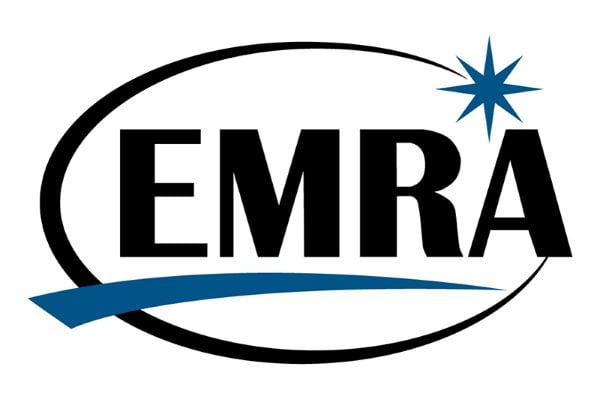Combined Emergency Medicine-Internal Medicine Residency: Is It Right for You?
Atira Shenoy OMS-3
Nova Southeastern University Dr. Kiran C. Patel College of Osteopathic Medicine
EMRA MSC Mentorship Coordinator
Rahul Ramakrishnan MS-3
Nova Southeastern University Dr. Kiran C. Patel College of Allopathic Medicine
In 1991, the American Board of Emergency Medicine (ABEM) and American Board of Internal Medicine (ABIM) published the official Emergency Medicine/Internal Medicine (EM/IM) training guidelines and paved a path for the establishment of a combined EM/IM residency program. Three decades later, 12 combined EM/IM programs have been established in 11 states, enabling hundreds of graduates to enter the clinical workforce. These programs are 5 years in length and allow physicians to be eligible for board certification in both EM and IM.
List of Combined EM/IM Residency Programs
- Christiana Care Health Services (DE)
- University of Illinois College of Medicine at Chicago (IL)
- Louisiana State University (LA)
- University of Maryland (MD)
- Henry Ford Hospital/Wayne State University (MI)
- Hennepin County Medical Center (MN)
- Vidant Medical Center/East Carolina University (NC)
- SUNY Health Science Center at Brooklyn (NY)
- Zucker School of Medicine at Hofstra/Northwell (NY)
- Ohio State University Hospital (OH)
- Jefferson Health Northeast Program (PA)
- Virginia Commonwealth University Health System (VA)
Consideration of EM/IM
Many medical students may not receive substantial exposure to, or information about, combined EM/IM programs during their preclinical and clerkship years. As a result, questions arise regarding what type of student would be the best fit for a combined EM/IM program. The first key consideration is knowledge. Applicants to EM/IM programs typically have an inherent desire to acquire a broad base of medical knowledge and to discover ways to integrate this knowledge into their future practice. From the EM perspective, applicants seek to develop skills in acutely identifying major diseases, stabilizing patients in acute settings, practicing hands-on techniques, and improving their multitasking abilities. On the IM side, applicants aim to expand their understanding of creating comprehensive differential diagnoses, ordering appropriate tests, deepening their understanding of the physiology behind a diagnosis, and exploring various subspecialties. An often overlooked but crucial aspect of why certain students may be well-suited for combined EM/IM programs is a genuine passion for medical education. Previous studies have noted that EM/IM graduates are frequently involved in both academic and leadership positions. This trend may be directly linked to the idea that EM/IM applicants are not only driven to immerse themselves in various specialties but also possess a strong desire to gain and share knowledge across various medical topics.
Satisfaction and Practicality
When contemplating specialty preferences in the modern era of medicine, medical students tend to consider lifestyle and satisfaction as major factors in their decision. With combined EM/IM programs, students may wonder about the resident satisfaction and the practicality to practice both specialties. In a 2009 survey of 127 EM/IM residency graduates from the years of 1998 to 2008, 88% of graduates stated that they would do an EM/IM residency program again and 64% of graduates believed it was practical to be certified in both EM and IM in clinical settings. In addition, a 2011 survey-based cohort study of 11 EM/IM programs and 112 residents found that 94% of residents were satisfied with their EM/IM residency placement. Based on the statistics and personal narratives, the majority of EM/IM residents and physicians are not only content with their residency selection but also plan on performing either academic medicine or clinical duties in the specialties.
Overall, EM/IM programs offer motivated individuals the opportunity to not only expand their medical knowledge base but also to develop the essential skills needed to manage a diverse range of conditions. Graduates from these programs are equipped with the training and adaptability to excel in clinical settings across both EM and IM specialties. In the coming years, there may be an expansion in the number of EM/IM programs, supporting the demand for healthcare professionals with refined clinical skills and a deep commitment to medical education.
References
- Scott N, Rodos A, Dwyer R, Tyo C, Martin D. Emergency Medicine/Internal Medicine Combined Residency Graduates Have High Career Satisfaction and Commonly Practice in Both Specialties. AEM Educ Train. 2020;5(2):e10493. Published 2020 Jul 24. doi:10.1002/aet2.10493
- Kessler CS, Stallings LA, Gonzalez AA, Templeman TA. Combined residency training in emergency medicine and internal medicine: an update on career outcomes and job satisfaction. Acad Emerg Med. 2009;16(9):894-899. doi:10.1111/j.1553-2712.2009.00503.x
- Kessler CS, Gonzalez AA, Stallings LA, Templeman TA. In-training practice patterns of combined emergency medicine/internal medicine residents, 2003-2007. West J Emerg Med. 2011;12(4):530-536. doi:10.5811/westjem.2010.11.2082
Related Content

Aug 28, 2024
Combined Emergency Medicine-Internal Medicine Residency: Is It Right for You?
Many medical students may not receive substantial exposure to, or information about, combined EM/IM programs during their preclinical and clerkship years. As a result, questions arise regarding what type of student would be the best fit for a combined EM/IM program. The first key consideration is knowledge.





